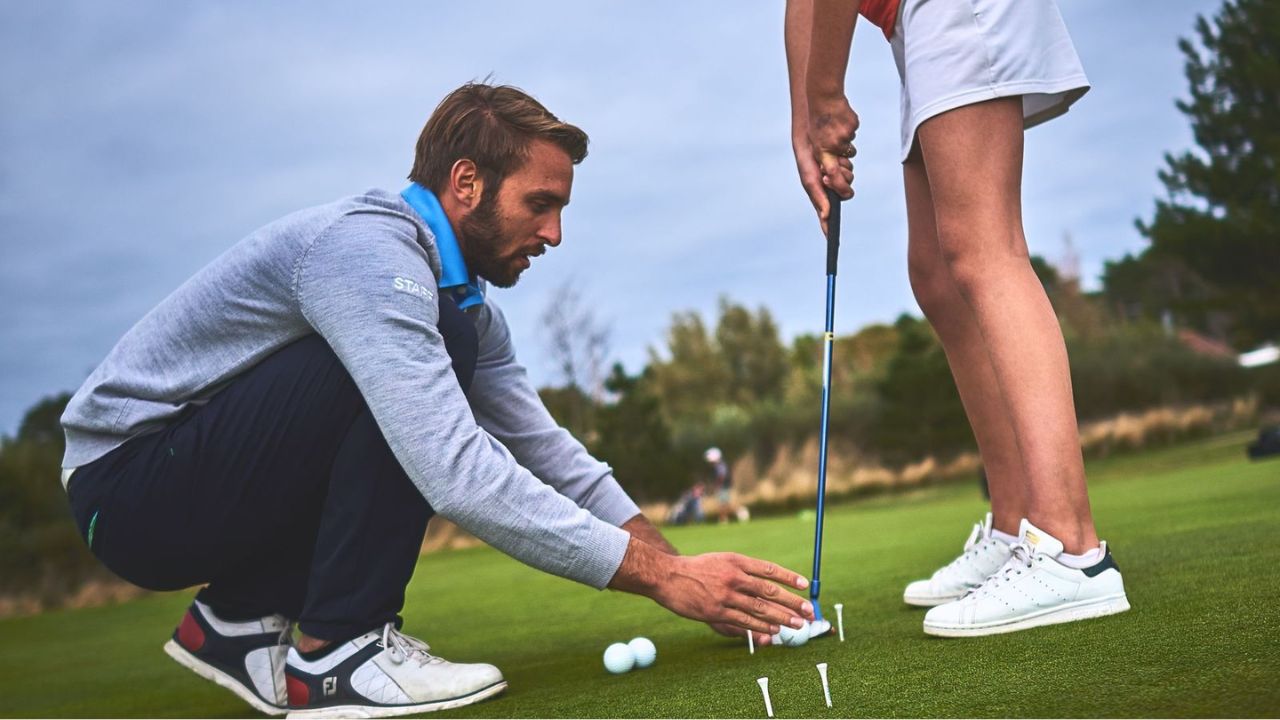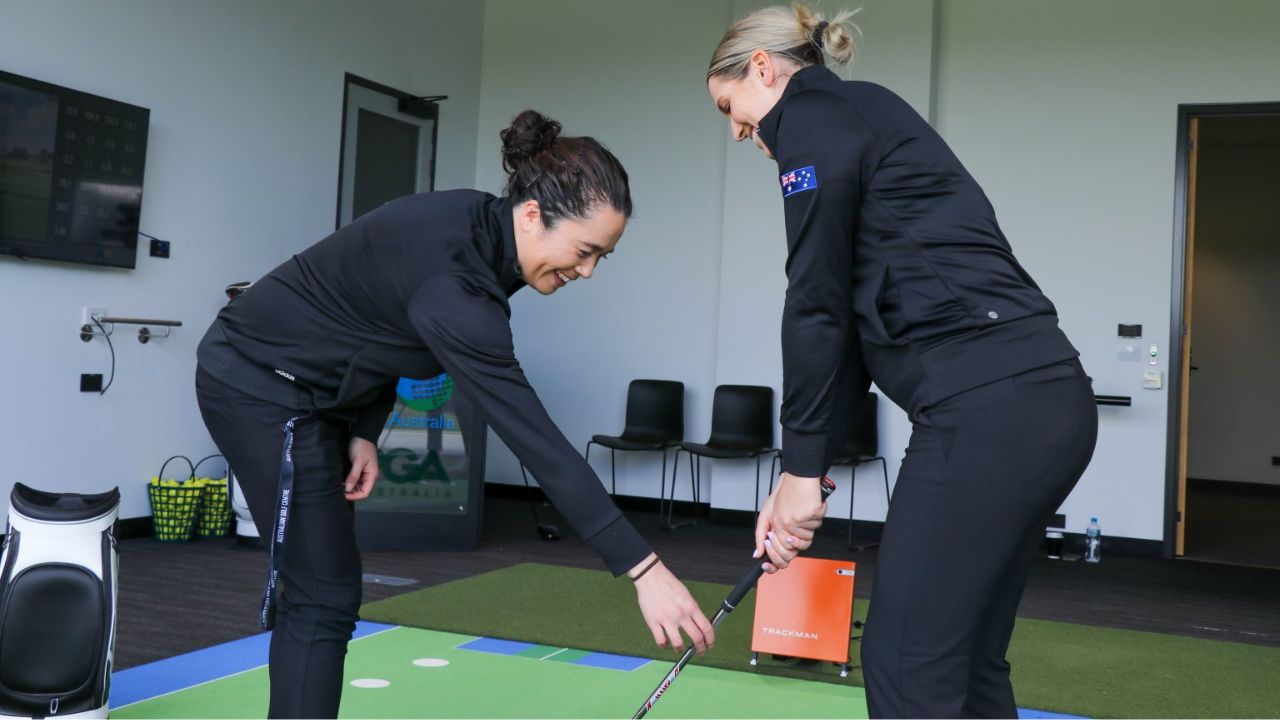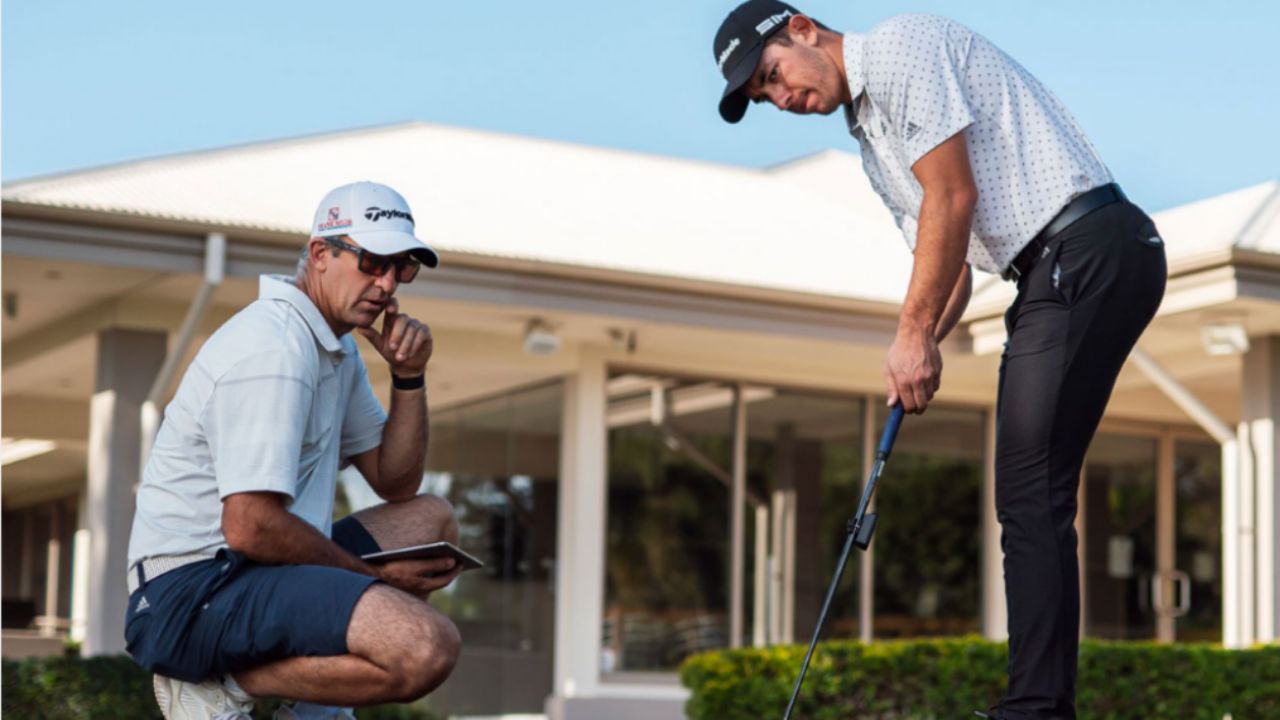Beginners Guide to Golf: Your First Golf Lesson - Part 1
Posted by GolfBox on 6th Aug 2018
If you’re a newcomer to golf it can seem intimidating to book a lesson with a golf pro, with all the dos and don’ts, etiquette and general stuffiness that sometimes pervades golf courses.
This GolfBox beginner's guide spills the beans on how to navigate your first lesson, so you can calm your nerves and get your game off to a flying start.
WHERE TO FIND A GOLF COACH
An obvious place to start the search is your local golf course, which usually has a team of teaching professionals on hand that provide lessons using the practice facilities.
But there are other options such as standalone driving ranges and indoor teaching academies that offer innovative methods of coaching using technology such as GC Quad or Trackman (more on that later).
To find teaching professionals near you, check out the PGA Australia website: https://www.pga.org.au/find-a-pga-pro

INDIVIDUAL LESSON OR GROUP CLINIC?
Taking one-on-one lessons is probably the go to improve rapidly, simply because of the undivided attention you’ll receive.
However, joining a clinic or group lesson alongside other golfers is an option if you prefer something more social. The sessions won’t be as intensive as a solo lesson but are often organised according to skill level, catering for complete beginners through to slightly more skilled players.
You can find clinics and group lessons at most golf courses and it’s also a great way to meet some playing partners for when the time comes to hit the course for real.
LESSONS BEFORE AND AFTER WORK
If you’re slugging it out working a full-time 9-to-5 gig, it makes it somewhat problematic to have a lesson on a weekday.
However, don’t despair because some professionals offer lessons before or after work hours. Just enquire about availability – most pros can slot you in if you’re dead keen for a lesson.
Weekend lessons are another option, but book ahead because they are always in high demand.
If you’re keen to get some teaching out on the course, some professionals will even play 9 holes with you and offer advice on every aspect of your game.

PHYSICAL RESTRICTIONS
If you suffer from an ailment and assume it’s hardly worth having a lesson because of your limitations, then think again.
A golf pro can tailor a lesson and drills that take into account your restricted movement, to ultimately get you swinging it better and enjoying the game more.
WHICH COACH SHOULD YOU CHOOSE?
It’s important to find a golf coach who you feel comfortable with and, most importantly, will enjoy taking lessons from. A one hour lesson will soon tell you if their coaching approach, style and methods will suit you.
Some coaches employ digital swing analysis technology, such as Trackman or Flightscope, that monitor key variables of your swing. A coach who is well-versed with the technology can interpret the ream of information to pinpoint where you need to improve.
Other coaches take a more organic approach to coaching, teaching by feel rather than looking at the stats.
Different approaches will suit different golfers, so don’t feel like you’re locked in after the first lesson. Ultimately, the choice is yours.

WHAT TO BRING TO YOUR FIRST LESSON
All you’ll really need to bring to your first lesson is a set of clubs (a hand-me-down set is fine), a teachable attitude and an open mind. Your pro might take a look and offer some club recommendations to suit your game but come prepared to listen and learn.
If you have booked a lesson with a pro at a private club, you’ll need to fulfil the dress code requirements. Remember to ask at the time of booking what you’ll need to wear, but most clubs are pretty relaxed – a collared shirt and appropriate footwear will usually suffice but steer clear of denim.
If it’s at a range or public course, just make sure you wear appropriate footwear - you don’t need golf shoes but a pair of joggers will do the job for now.
BEFORE THE LESSON
Having a golf coach assess your game will hopefully improve the weakest parts of it.
It’s not a bad idea to have in mind what you want to fix, so decide before the lesson starts what you most need help with – even if it’s as simple as just getting the club on the ball.
And it’s not all about your swing: your coach can assist with short game skills such as bunker play, chipping and putting.

THE GOLF PRO
Arrive for your lesson with plenty of time to spare so you can stretch and warm up before reporting to the pro shop to meet your new coach.
Your coach will probably begin the lesson by asking you questions such as:
- How long have you been playing?
- What’s your handicap? (don’t worry if you don’t have one, you don’t need it to have a lesson)
- What aspects of your game do you want to improve?
- How much practice are you able to do?
- Do you have any physical restrictions that impede your swing?
THE LESSON
After the golf pro has got a feel for where you’re at, it’s time to start hitting some balls – maybe a half dozen or so usually using a six or seven iron.
Don’t be worried by the apparent silence after each of your opening shots; your coach is simply trying to ascertain your ball flight and assess your swing movement.
Now’s where the coaching part starts. Your golf pro will diagnose any problems they detect and try to explain it to you in simple terms.
The pro will probably use a video recording of your swing to assist your understanding. As they say, a picture is worth a thousand words.
After the diagnosis, your golf coach will show you how to correct your faults, again by keeping it simple and narrowing the focus down to just one or two things to work on initially.
This is where a good teaching pro’s expertise comes to the fore: they’ll explain how to develop your technique without overloading your brain with too much information.
Whether it’s through a teaching aid or drill, your pro will explain new movements and feelings necessary to ingrain the swing changes.

BOOM OR BUST
Sometimes all that’s required is a small trigger to see instant results during your lesson.
But don’t be discouraged if everything feels weird and you’re hitting it worse than ever during and after your first lesson.
Swing changes sometimes take time – trust your coach, stick with it and keep practising the new drills your coach has assigned to you.
AFTER THE LESSON
Your mission is to complete the new drills your coach has given you, subject to how much time you can dedicate to practising them.
The more the better but remember, it’s vital to complete the drills correctly; don’t adjust them just because everything feels a bit different to what you have done in the past.
Existing habits sometimes take a while to change and completing drills slowly is often the best way to improve technique.
THE TAKE AWAY
If you thought your first lesson was a success and can see a bright future with your coach, try to book in regular lessons to keep the momentum going. You can often get a discount for buying lessons in bulk to use later down the track.
A lesson will take the guesswork out of your swing by focusing on the areas that require attention and not changing the already sound aspects of your swing.
If your coach uses swing analysis technology, you can benchmark your swing when you’re hitting it great for a comparison when you’re not. Storing the data for future lessons (if you’re keen to return, of course), means you can start your next lesson exactly where you left off from your last one.
So go ahead, book your first lesson and take your enjoyment of the game to even greater heights.


